So as I’m wandering around thinking about what to tackle next it started bothering me that the truck leaned noticeably to the driver side (like an inch). Earlier I had jacked it up and placed the frame on stands and measured everything. The frame measured out square and level, and the trailing arms weren’t bent. I had replaced the rear springs twice (and changed them side for side another time). New front springs had been installed with the 1975 crossmember swap and yet it still sat crooked. I even measured the bed and body to make sure it wasn’t an issue with the mounts. I kept checking until it was determined the front spring on the driver side was sagging about an inch more than the passenger side. They were only about 10 years old but the one side just gave up faster than the other.
I didn’t even bother pricing out new springs because I just wasn’t physically up to changing them at the time.
So I started considering possible alternatives. Looking back to my high school days, spring spacers were very popular with guys in my budget range and age bracket.
They instantly transformed your average teen kid car into am impressive high dollar gasser with just some minor effort (smashed, pinched and bruised fingers mostly). The intent was to force the coil springs to stay separated, lengthening the spring and sticking the nose in the air. It was worth the injuries, knowing that soon all the girls around would be overwhelmed with ecstatic joy at the mere sight of my super fast gasser style car!
Of course to adults the result probably just looked stupid, and strangely I don't remember the girls being all that impressed either.
 The Unofficial History of Spring Spacers
The Unofficial History of Spring Spacers
There were several types available in the early 60’s. Here are some examples, starting with what was most commonly available where I lived:
The block or wedge type. This is the only example I have left. My son found it in a wrecking yard and polished it up for me as a souvenir:

The spring was forced open with a crow bar and tire iron, and the spacer gently tapped in place with a hammer. Well not exactly. Needing 3 hands and having only 2 turned out to be an inconvenience. Once the spring was spread as much as practical, the spacers were nearly beaten to death almost knocking the car off the jack stands trying to get them in place. In theory they could be inserted either horizontally or vertically, and spring pressure would hold them in either position. 1954 Chevy spring coils were very close together, and the spacers would only fit horizontally.
An improved model soon came along, the twist-in style. Early models spread the coils maybe an inch. Later models were considerably bigger.
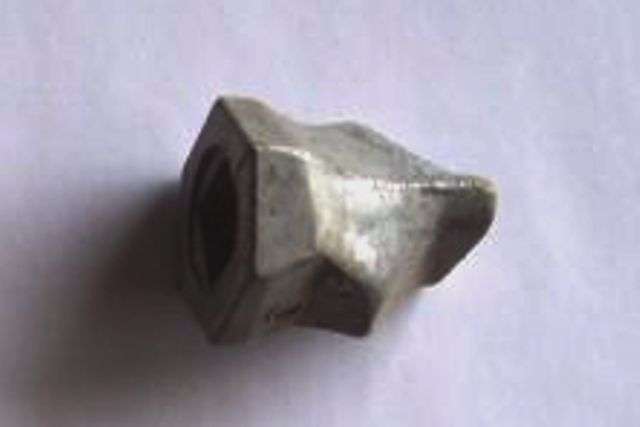
Installation required only the simple twist of a wrench. Well, again maybe not quite that easy. If you had a crow bar and tire iron to spread the coils, a couple of socket extensions, a breaker bar with a cheater pipe along with 3 hands to manage all the tools, they twisted right in place.
Other designs I never found locally can be seen in the 1962 J.C. Whitney catalog. At the time I really wished I could find this installation tool. It seemed a lot more convenient than all the pry bars:
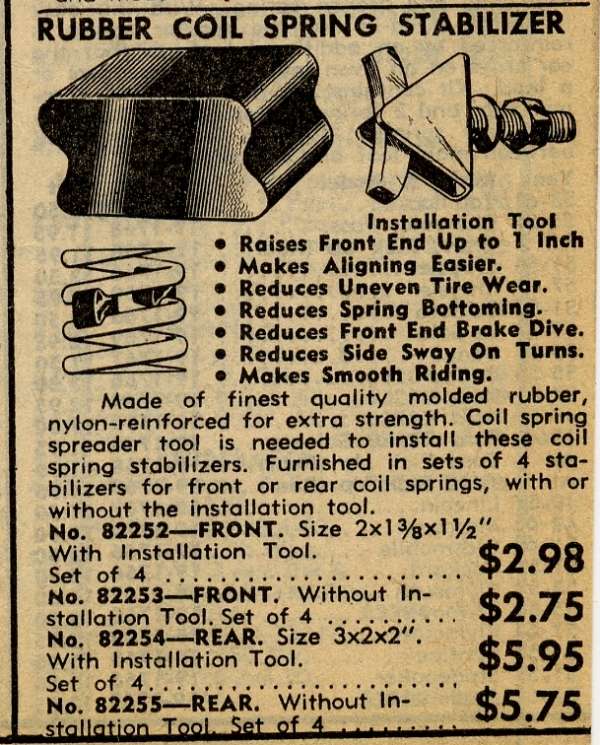
This type just seemed ridiculous. All I could envision was the thing collapsing or breaking and shooting fragments in your face while you were trying to put it in:
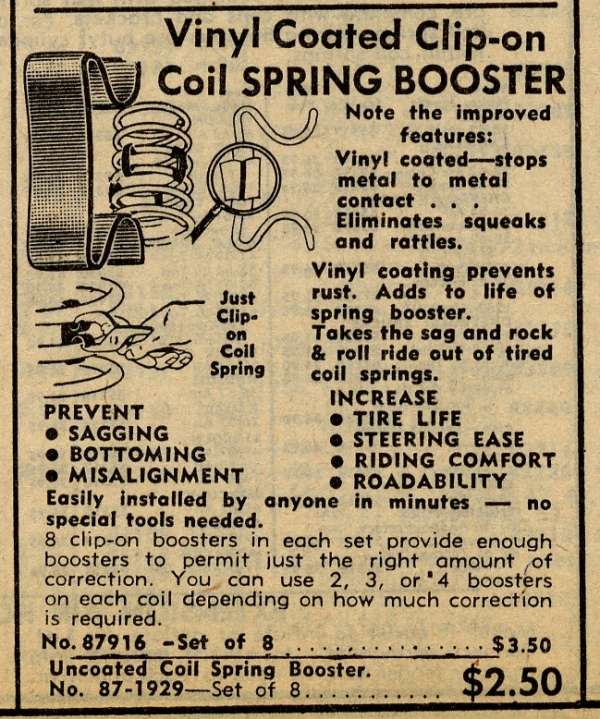
This looked to be the most impossible to install (at least on my car):
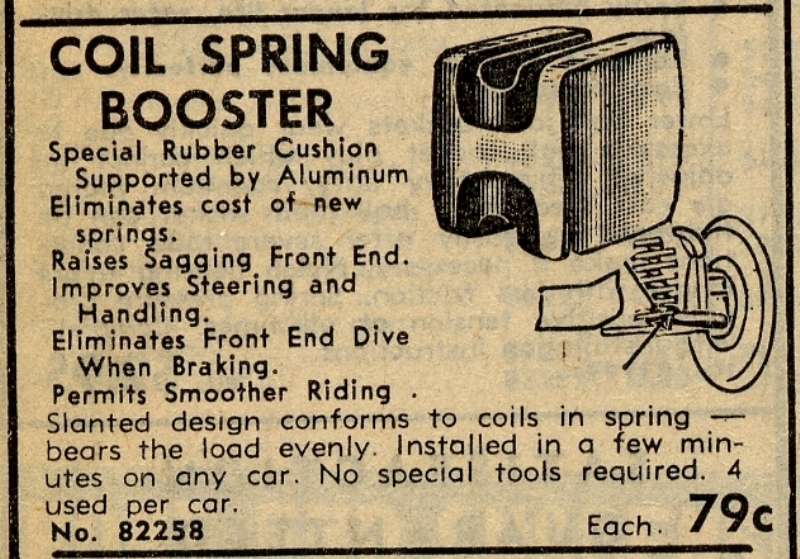
And these seemed just plain goofy. With no way to spread the spring that far, no surface area to grip the spring adequately, and extending them causing probably breakage or separation…:
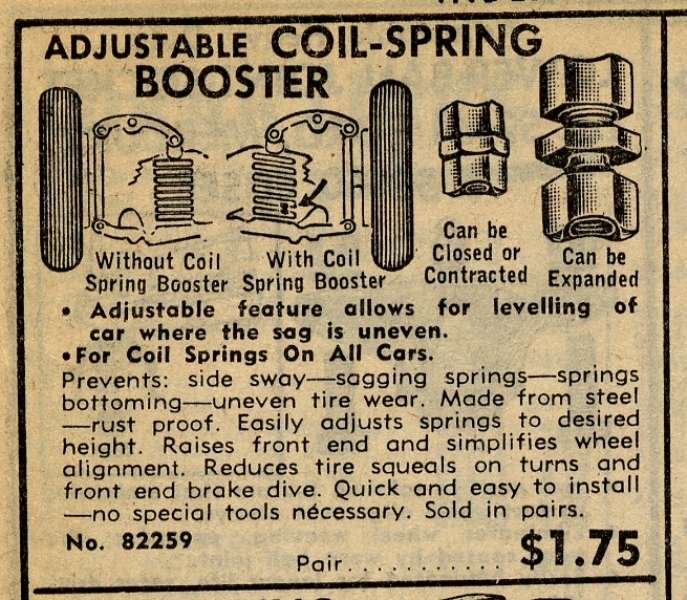
These seemed like they might actually work – for a while, at least until the bolt loosened up and vibration caused it to fall out.
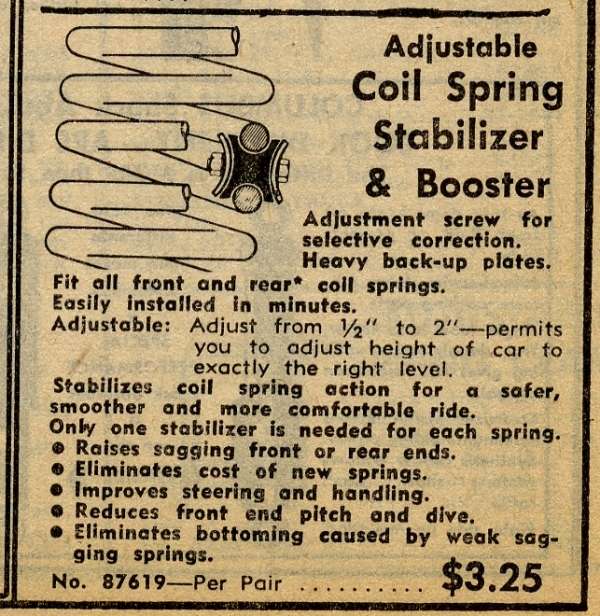
In my experience, none of them worked. Even with the limited travel of driving back and forth to school, within a week or so when the car hit a bump one or more popped out. The car leaned over until more could be added or others removed to balance things up again.
But all this reminiscing started me thinking along a more modern version of the same concept – spring rubbers, like those used in race cars to alter the spring rate.
So I ordered up a 1” Afco AFC20186 spring rubber. Here’s what it looks like. Since it has deep grooves on both top and bottom surfaces, and goes all the way around the spring, it doesn’t pop out.
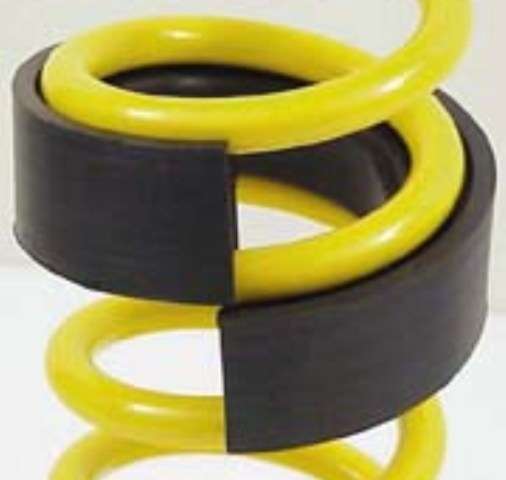
Here’s the passenger side of my front suspension, obviously without the spacer.
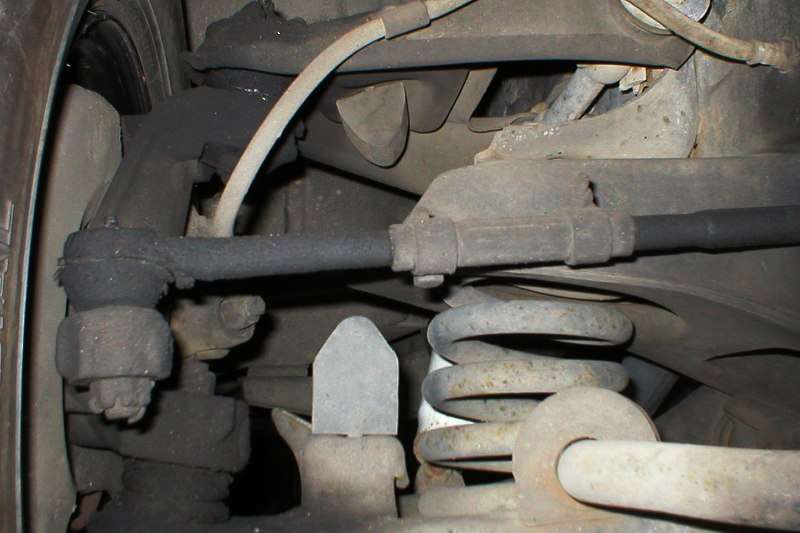
And here’s the driver side with the spacer fitted:
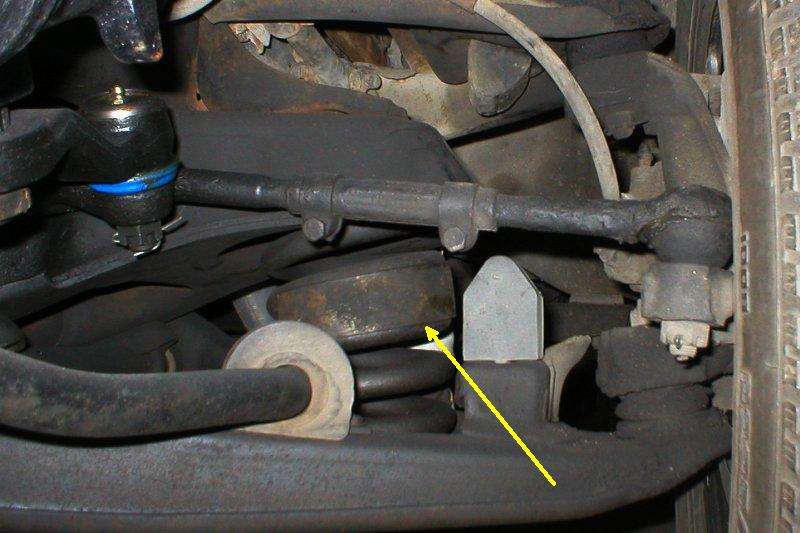
In truth it wasn’t much easier to install than the aluminum versions in high school, except this time I used plenty of lubricant, disconnected the upper shock bracket, and removed the upper bumper for more suspension travel. Beyond those improvements it was still a matter of manhandling the spring like a teenager enough to insert the rubber. The project was worth the effort however. It may not be pretty, and I can’t say I’ve noticed any girls being impressed by the addition, but the truck now sits dead level, and once again corners and rides like it has a brand new matched set of springs.